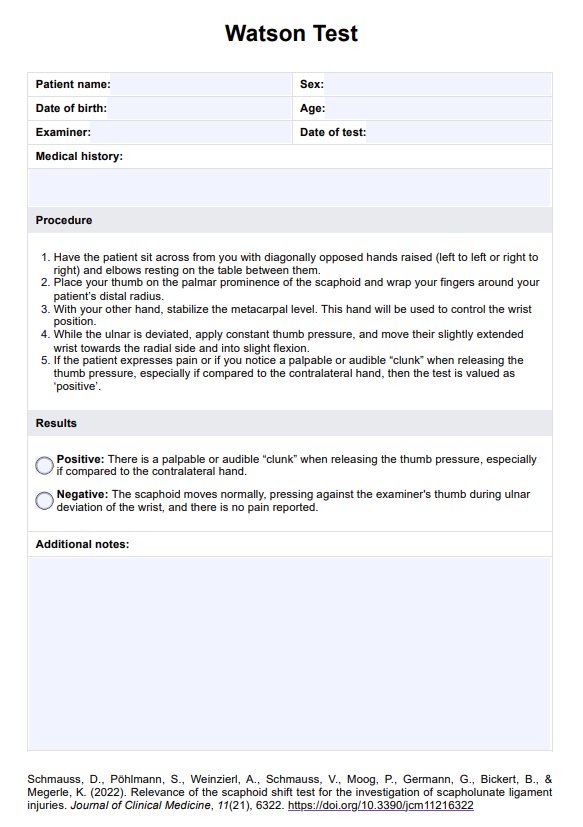If you have an SL ligament rupture, you might experience wrist pain, swelling, and a clicking or popping sensation. Consult a healthcare professional for an accurate diagnosis and treatment plan.

Watson Test
Easily assess your patient for scapholunate ligament (SL) instability with a Watson Test. Conduct the test and document findings with our template.
Use Template
Watson Test Template
Commonly asked questions
Watson's Test is used to assess scapholunate ligament injuries, helping to identify instability in the scapholunate ligament of the wrist.
The Watson Test typically takes less a minute to perform. It is a quick clinical assessment used to evaluate scaphoid stability in the wrist.
EHR and practice management software
Get started for free
*No credit card required
Free
$0/usd
Unlimited clients
Telehealth
1GB of storage
Client portal text
Automated billing and online payments











